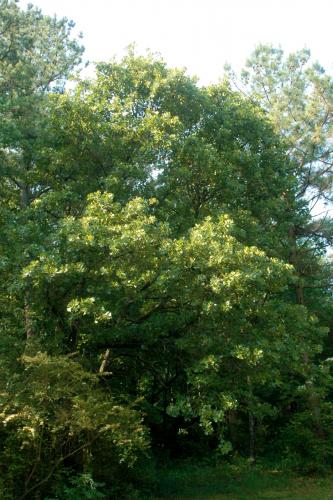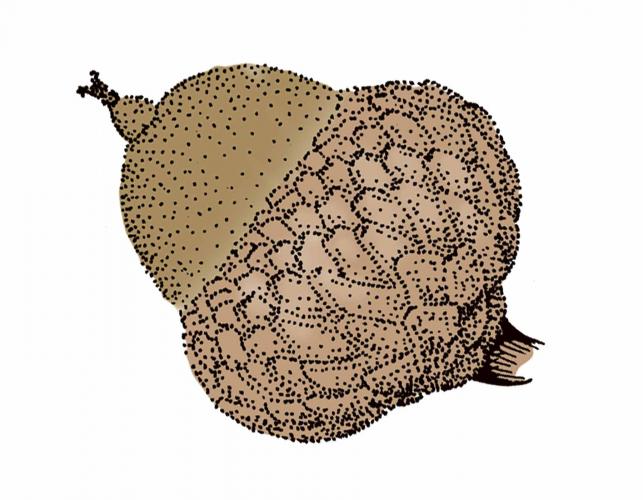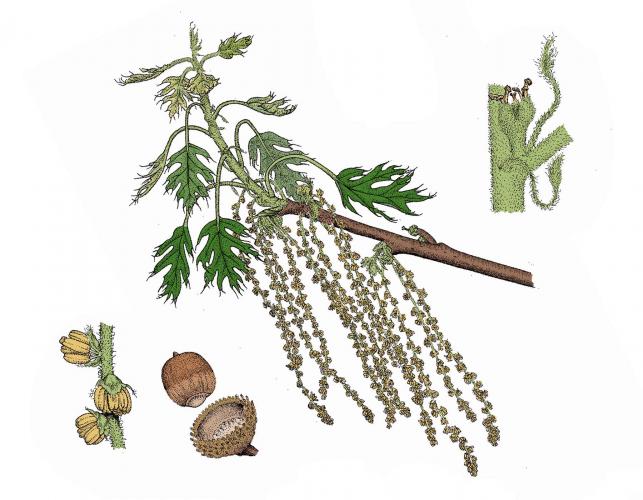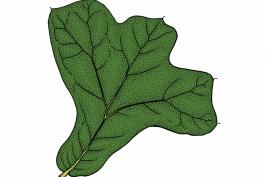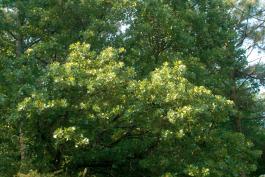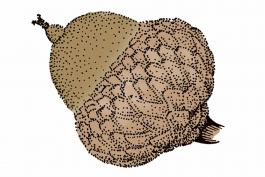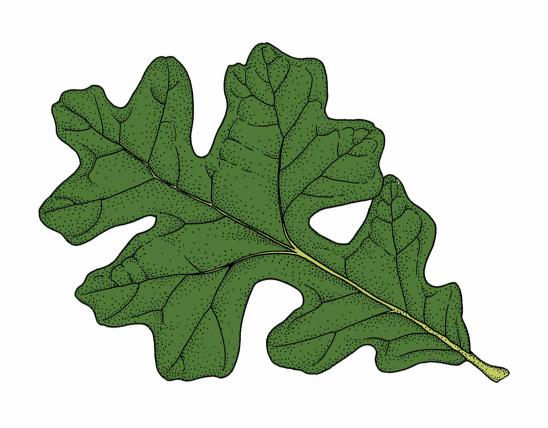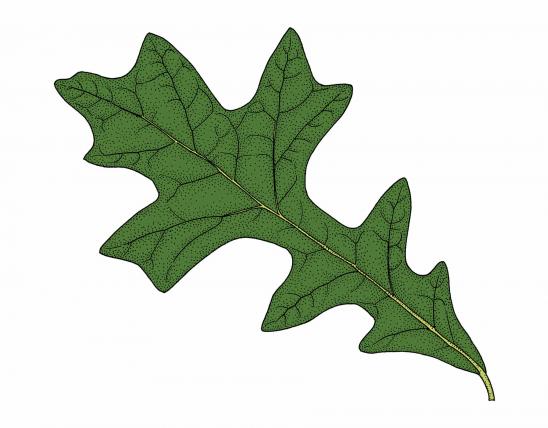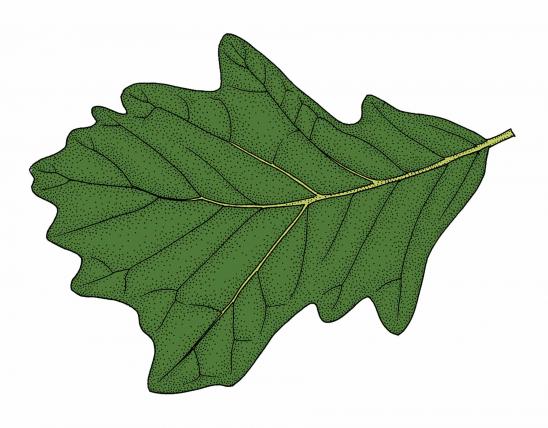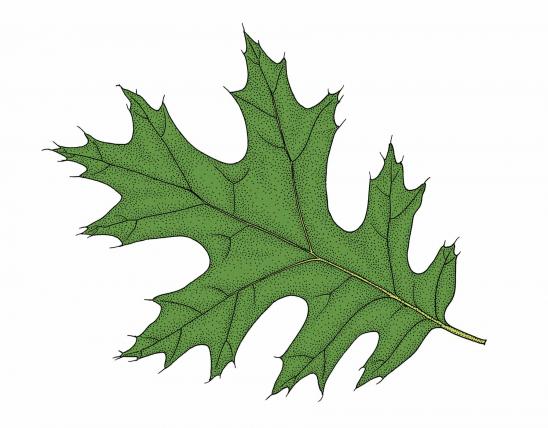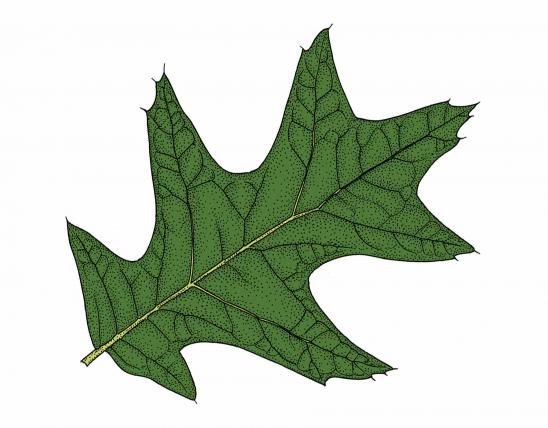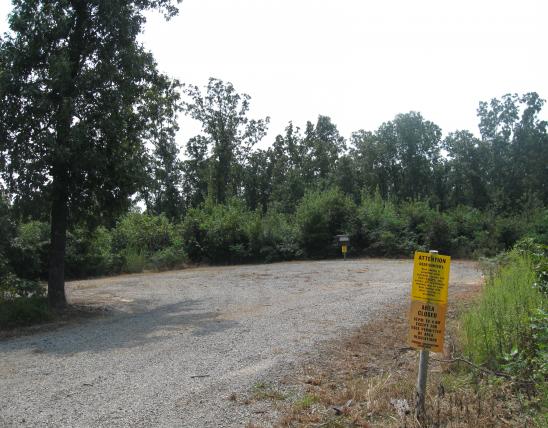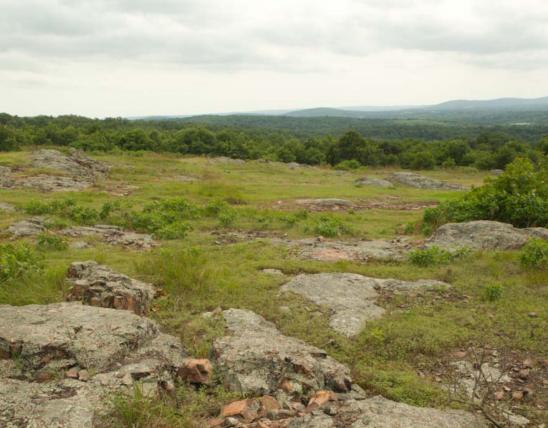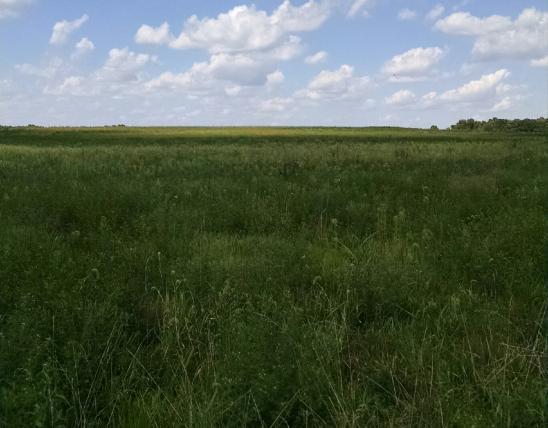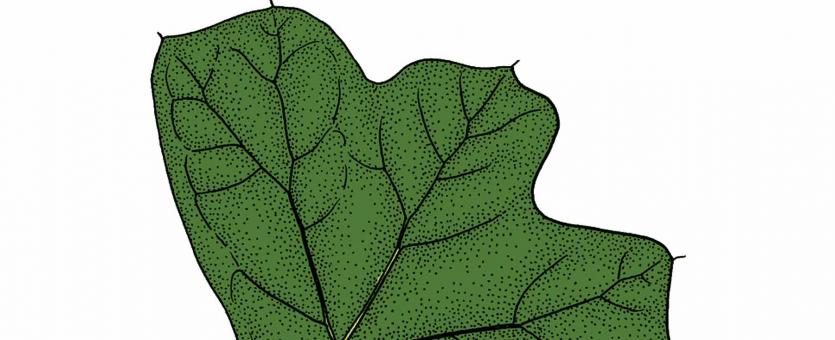
Blackjack oak is a small to medium-sized tree with a rounded, irregular crown; distinctive bark; and a tendency to retain dead branches on the middle to lower part of the trunk. It is well limbed along the entire length of the trunk.
Leaves are distinctively wedge- or bell-shaped; alternate, simple, bristle-tipped, leathery, and shallowly 3-lobed. Upper surface is dark green and shiny; lower surface is yellow-brown or yellow-green, with tan to brown hairs. Several leaves persist in winter.
Bark resembles alligator hide; blackish, very rough, with square or rectangular blocks.
Twigs are stout, stiff, grayish-brown, and densely hairy at first, smooth later; buds reddish-brown, narrowly cone-shaped, hairy.
Flowers April–May; in catkins.
Fruits September–October, a yellow-brown acorn, ½ to 1 inch long; cup deep, turban-shaped, red-brown, scales loose, hairy, covering ⅓ or ½ of the nut. Stalk very short. Acorns ripen in autumn of second year.
Height: up to 60 feet, but rarely more than 30–40 feet.
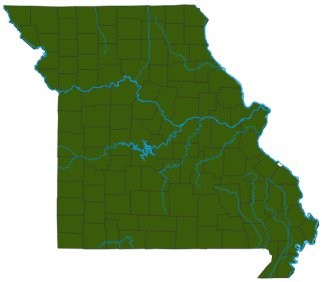
Scattered to common nearly statewide, but uncommon to absent in the western portion of the Glaciated Plains division and the southern portion of the Mississippi Lowlands.
Habitat and Conservation
Occurs in acid soils over sandstone, chert, or igneous bedrock, on dry, often level uplands, slopes, savannas, and glades. Common in dry upland forests, especially ones that have been badly burned; often found growing on the poorest soils. Blackjack oak can withstand fire because of its thick, insulating bark and its ability to resprout. It is one of the first trees to occupy an area following a fire. Relatively short-lived, this slow-growing species cannot grow in shade. Occasionally grows along banks of streams. Also found in pastures, railroads, and roadsides.
Human Connections
The wood has been used for railroad ties, fenceposts, charcoal, and fuel. Although it is rugged, it's not worth much as lumber. Its relatively short life, short stature, and slow-growing nature make it one of the first trees to be selected for use as fuel, while taller, more glorious types of trees are saved from such destruction.
Native Americans had many medicinal uses for oaks.
Blackjack oak is a humble, unadmired tree, but we must also give credit to this rugged tree for living in places where few other trees will live.
Ecosystem Connections
Jays, woodpeckers, turkey, mice, squirrels, raccoon, and deer eat the acorns.
Innumerable organisms, from lichens to spiders, birds, snakes, squirrels, and raccoons, live in oak trees, in cracks in the bark, among the leaves, in the branches, or in hollow wood.

